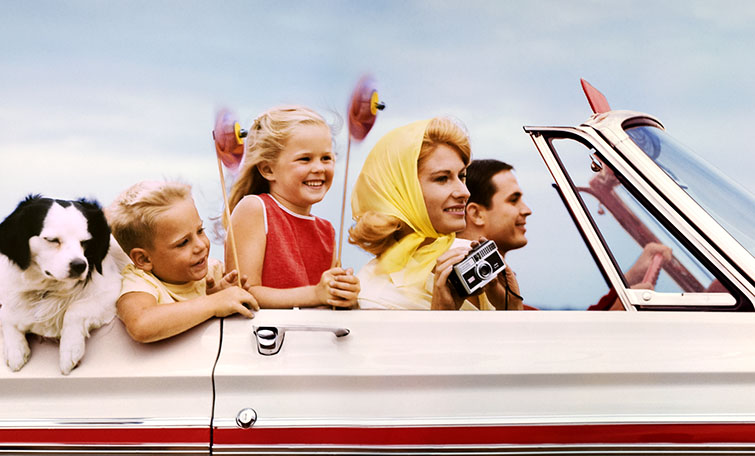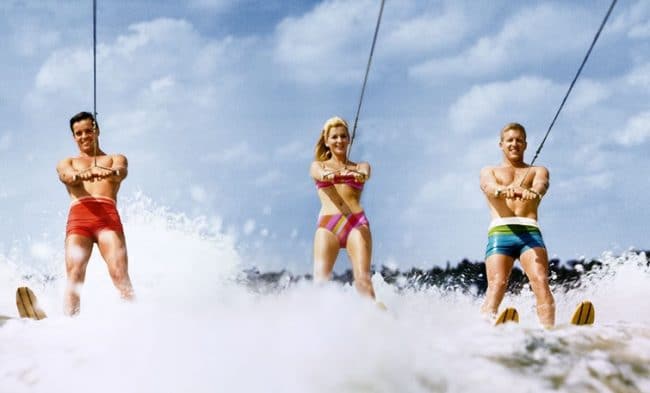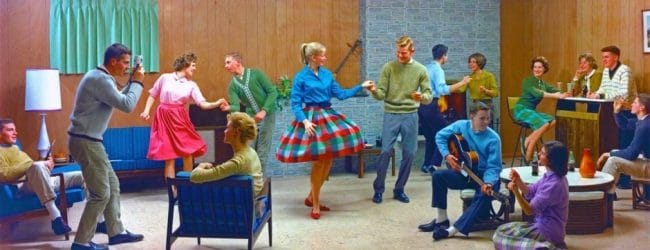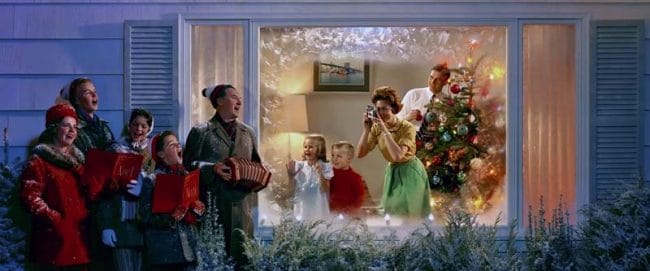In 1950, the Eastman Kodak Company installed the first Colorama on the interior east wall of Grand Central Station. These advertisements were billed as the world’s largest photographs and were indeed huge: 18 feet high and 60 feet long, requiring more than a mile of cold-cathode tubes to light them from behind. As a major corporate and aesthetic undertaking, the production of Coloramas required the combined efforts of Kodak’s marketing and technical staffs, and scores of photographers, including such notables as Ansel Adams, Ernst Haas and Eliot Porter.
Colorama, organised by the George Eastman Museum, comprises a wonderful collection of Colorama photographs which offer an image of a ‘perfect’ America. Idyllic landscapes and family portraits depict a rose-coloured patriotism.
Babies, puppies and kittens feature often, appealing to our sentimentalities. Snaps of ‘traditional’ family holidays were also a common theme. As were uplifting current events such as the moonwalk and royal weddings. The impact at Grand Central was immediate and sustained through an astounding 565 Coloramas over a 40-year period ending in 1990. With each unveiling, there were gasps of delight from NYC residents and travellers alike. Over 600,000 people. Every day
As much as they were undisputed works of modern art, the Coloramas were an advertising campaign. And not just any ad campaign; the most iconic advertising campaign in history. They existed to sell Kodak products. And to put a camera in every hand in the quest to spread colour photography and the now essential leisure activity to the willing masses. Aside from showcasing Kodak’s technological and creative prowess, these panoramic scenes were appreciated for promoting picture-taking by the millions on the hunt for the perfect Kodak Moment.“Everyone who sees the Colorama,” said Adolph Stuber, Kodak’s Vice President of Sales and Advertising,” should be able to visualise themselves as being able to make the same wonderful photo.”
Then there was the film. The resolution and grain were getting better, coating was becoming thinner, the image sharper. Kodak would take the 8″x20″ negative, step print it in vertical sections and essentially splice them together to create the 18′ x 60′ image. Technicians would glue them together, piece by painstaking piece. Wet 20-foot transparencies were then dried overnight.
In 2010, Eastman Kodak donated the Colorama archive to the George Eastman Museum. The gift included thousands of original items and source materials along with display images of the entire Colorama collection.
The Coloramas taught us not only what to photograph, but how to see the world as though it were a photograph. They served to manifest and visualise values that even then were seen as nostalgic, captured through the time defying alchemy of cameras and film.
Colorama runs to 31 December 2016 at the Southampton Arts Centre.
For further information, please visit: www.southamptonartscenter.org












